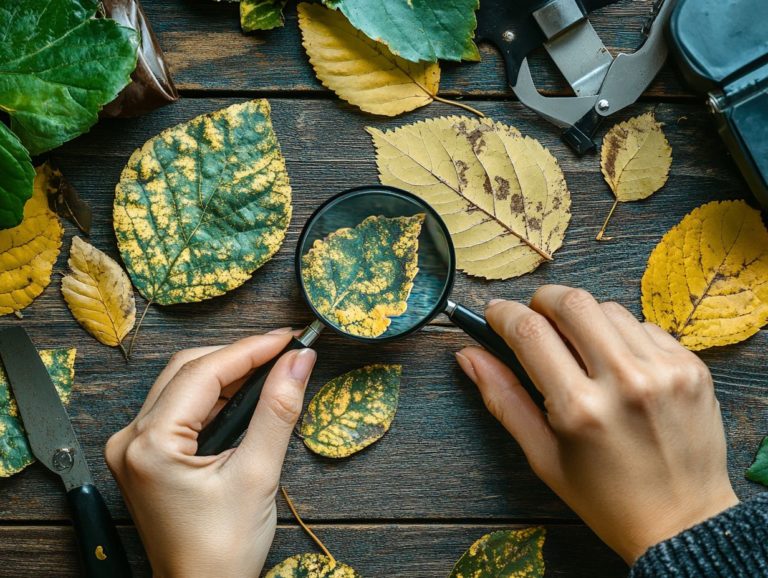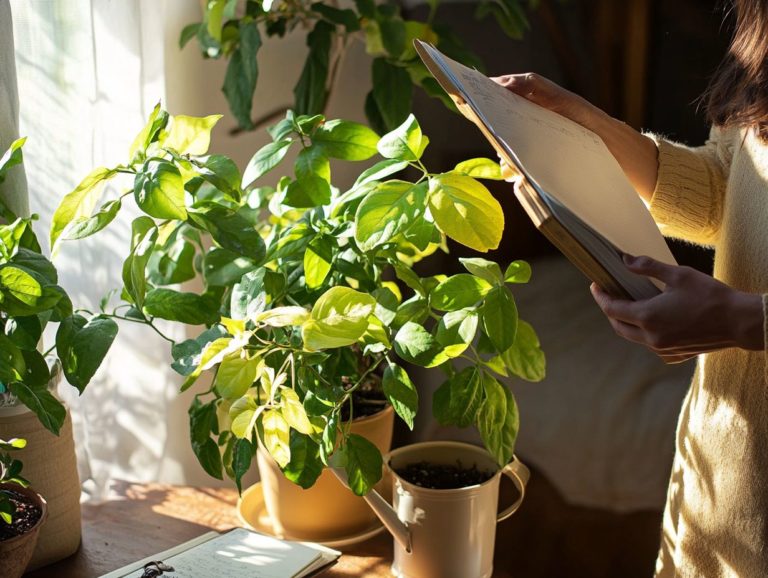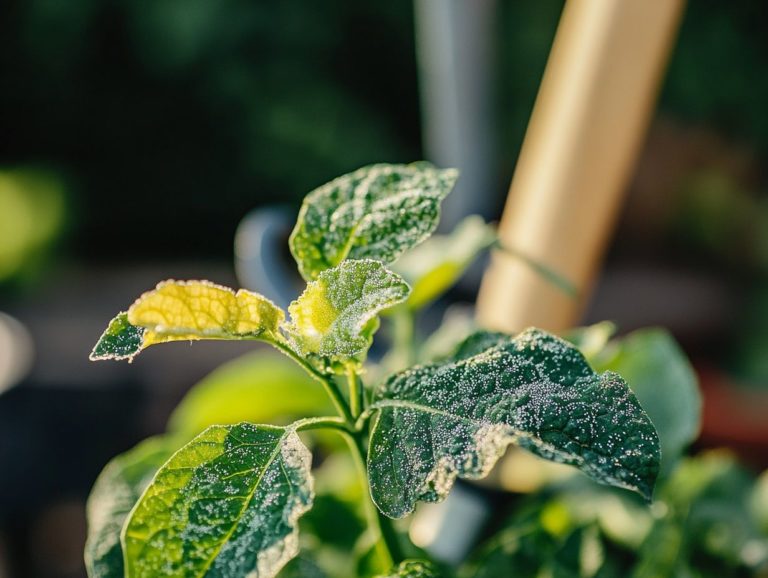Easy Solutions for Common Houseplant Issues
Houseplants bring life and warmth to our homes. However, they can also pose unique challenges. From yellowing leaves to pesky pests, recognizing the signs and symptoms of common issues is key to keeping your plants vibrant and thriving! This article will walk you through how to identify and prevent these problems, providing you with troubleshooting tips and exploring effective treatments for pests and diseases.
You ll also discover practical steps to revive any struggling plants. Let s work together to make your indoor garden flourish!
Contents
- Key Takeaways:
- Spotting Issues Before They Grow!
- Preventing Common Houseplant Issues
- Troubleshooting Common Houseplant Issues
- Dealing with Pests and Diseases
- Reviving a Sick Houseplant
- Frequently Asked Questions
- What are some common houseplant issues that can be easily solved?
- How can I easily solve overwatering of my houseplants?
- What can I do to address under-watering of my houseplants?
- What is an easy solution for houseplants with insufficient light?
- How can I deal with pest infestations on my houseplants?
- What preventive measures can I take to avoid common houseplant issues?
Key Takeaways:
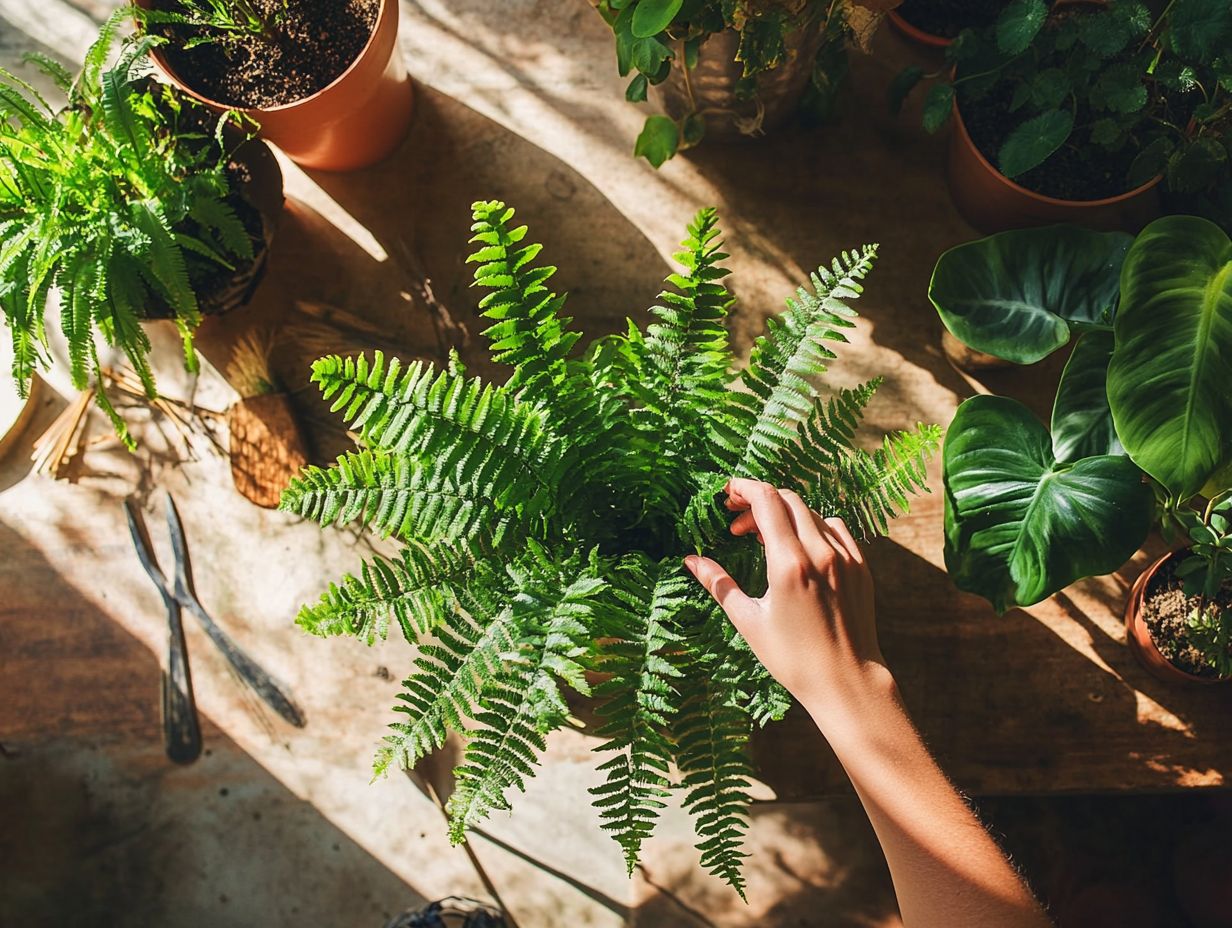
Inspect your houseplants regularly. Catching problems early can help keep them healthy!
Ensure your plants receive adequate sunlight, water, and nutrients to prevent common issues.
Quickly troubleshoot problems using simple solutions, like repotting, adjusting watering frequency, or pruning affected parts.
Spotting Issues Before They Grow!
Identifying common houseplant issues is key to keeping your plants vibrant and thriving in a well-suited indoor gardening environment. The factors you consider like light source, humidity levels, and watering routines play a significant role in your plants’ well-being.
By recognizing symptoms such as yellow leaves, brown tips, and leaf spots, you can effectively diagnose underlying problems. Understanding soil drainage helps prevent serious plant diseases. Additionally, being aware of common pests can save your plants from further harm.
For every indoor gardener, familiarizing yourself with these essential aspects is not just beneficial; it’s vital for thriving greenery.
Signs and Symptoms
You may notice signs and symptoms of houseplant issues manifesting through changes in foliage, like leaf discoloration, curling leaves, or the emergence of disease symptoms such as unsightly leaf spots. These changes often suggest underlying problems, such as pest infestations, inadequate light, or nutrient deficiencies.
When inspecting the foliage, it s essential to meticulously examine both the upper and lower surfaces of the leaves for tiny pests, webbing, or mold each of which can signal unhealthy conditions. Remember, maintaining optimal air circulation around your plants is crucial. Stagnant air can lead to increased humidity levels that encourage fungal diseases.
Inconsistent humidity can stress your plants, making them more vulnerable to pests and diseases. To protect your houseplants, it’s important to know how to identify common indoor plant pests. Regularly checking for signs of nutrient deficiency like yellowing leaves or lackluster growth is key to ensuring the long-term health and vibrancy of your houseplants.
Preventing Common Houseplant Issues
Preventing common houseplant issues requires a proactive strategy that involves understanding and applying care methods specifically tailored to the needs of your indoor plants.
By establishing a consistent watering routine, ensuring optimal soil drainage, and providing sufficient lighting, you can cultivate a nurturing environment that fosters healthy growth.
Furthermore, by monitoring indoor humidity levels and adjusting environmental conditions accordingly, you can effectively safeguard against potential plant problems while enhancing overall maintenance.
Proper Care and Maintenance
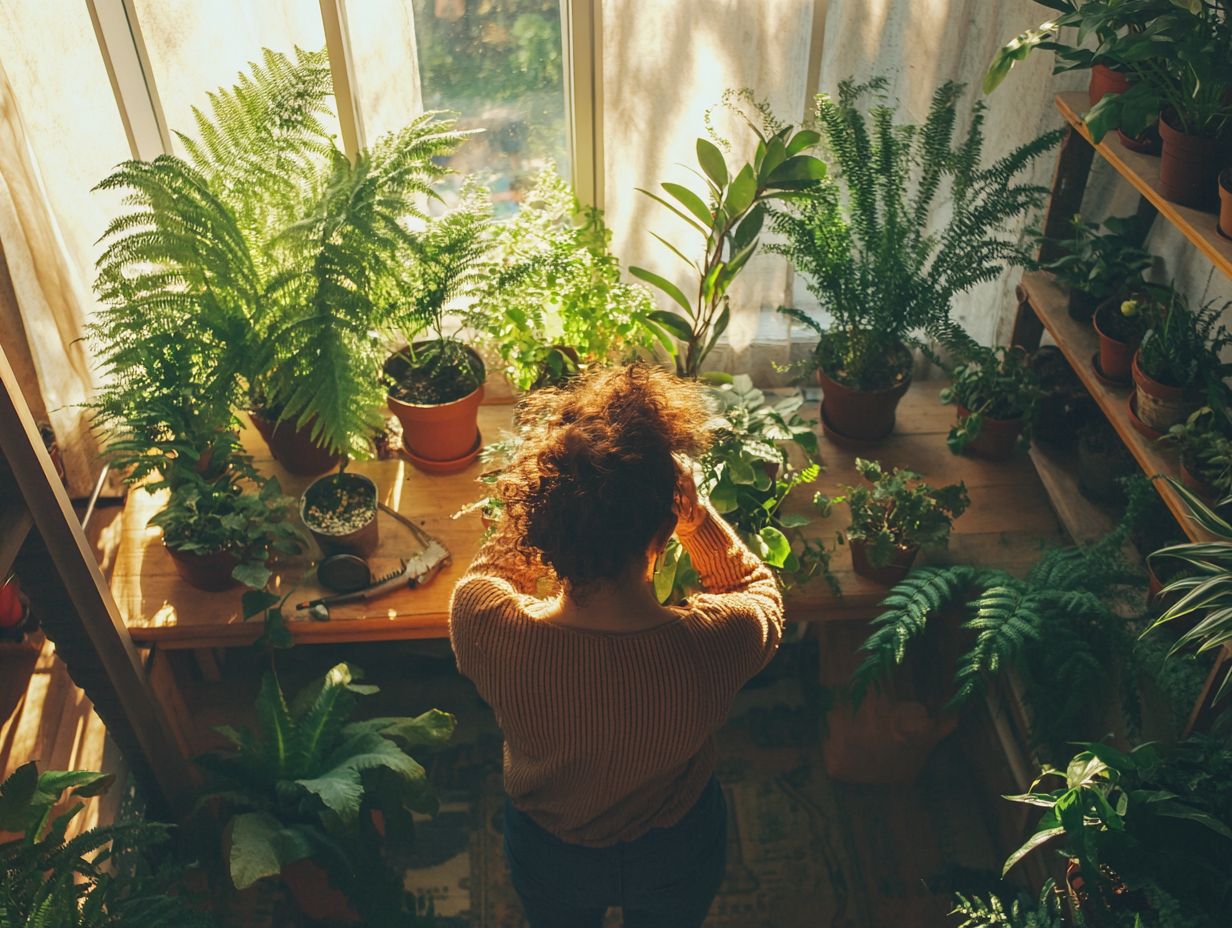
Taking care of your houseplants is key to their health. Focus on watering, fertilization, and light.
Understanding how to meet each plant’s needs can yield great results. For example, succulents need less water, while tropical plants prefer more moisture.
Choosing the right light sources whether it’s bright or dimmer is crucial for their growth. Regular fertilization during the plant’s growing season boosts nutrient absorption, keeping your plants lush.
By integrating these components, you can create a thriving indoor garden that flourishes beautifully!
Troubleshooting Common Houseplant Issues
Solving plant issues requires a careful look at what s going wrong. Recognizing symptoms like leaf curling or yellowing leaves is essential.
Addressing problems like overwatering or pest infestations is vital. With the right gardening tips, you can transform your plants into vibrant beauties!
Common Solutions and Tips
Solutions for plant health often include identifying pests and recognizing disease symptoms. Spotting early signs, like wilting leaves, helps you act quickly.
Using natural pest deterrents, such as neem oil, can help reduce infestations. Adopting effective watering practices also prevents issues.
Regular inspections and using organic treatments can nurture a flourishing garden ecosystem!
Dealing with Pests and Diseases
Managing pests and diseases keeps your plants healthy. Common pests like aphids can cause serious damage if not controlled.
Conducting regular inspections for insect activity is crucial. Using treatments like neem oil can help combat fungal issues and gray mold.
Identification and Treatment

Identifying issues is vital for plant health. Spotting signs of pests and diseases helps you manage problems early.
Look for signs like discoloration or wilting. Small holes may indicate insect damage, while fuzzy mold could point to fungal issues.
Once you identify the problem, you can choose from various treatment options. Preventive measures, like crop rotation and maintaining healthy soil, are also crucial!
Taking a proactive approach enhances your ability to maintain robust plant health. Enjoy the rewards of your gardening efforts!
Reviving a Sick Houseplant
Reviving a sick houseplant requires a clear plan. You need to assess its needs and make thoughtful adjustments to its care routine, especially concerning watering and light exposure.
Key factors to consider include reviewing your watering habits, optimizing light exposure, and adjusting humidity levels to cater to the specific needs of the plant. These adjustments can greatly improve its chances of recovery.
Focus on these key areas to boost your plant’s recovery and breathe new life into your indoor greenery.
Steps for Bringing a Plant Back to Health
Bringing a plant back to health requires essential steps, including optimizing light conditions and ensuring the right humidity levels.
To successfully embark on this recovery journey, start by assessing your plant’s current condition. Check the soil; if it feels overly wet or compacted, you might be dealing with poor drainage. This could mean it’s time to repot your plant into a well-draining mix that promotes airflow to the roots. Additionally, understanding the hydration needs of common houseplants can further improve your plant care routine.
Next, take a look at your plant’s location to ensure it s getting the right amount of light some plants thrive in bright, indirect sunlight, while others prefer a cozy spot in partial shade.
Gradually adjusting humidity can also work wonders, creating an environment that encourages rejuvenation. By implementing these strategies, you ll set the stage for a healthier, more vibrant plant.
Frequently Asked Questions
What are some common houseplant issues that can be easily solved?
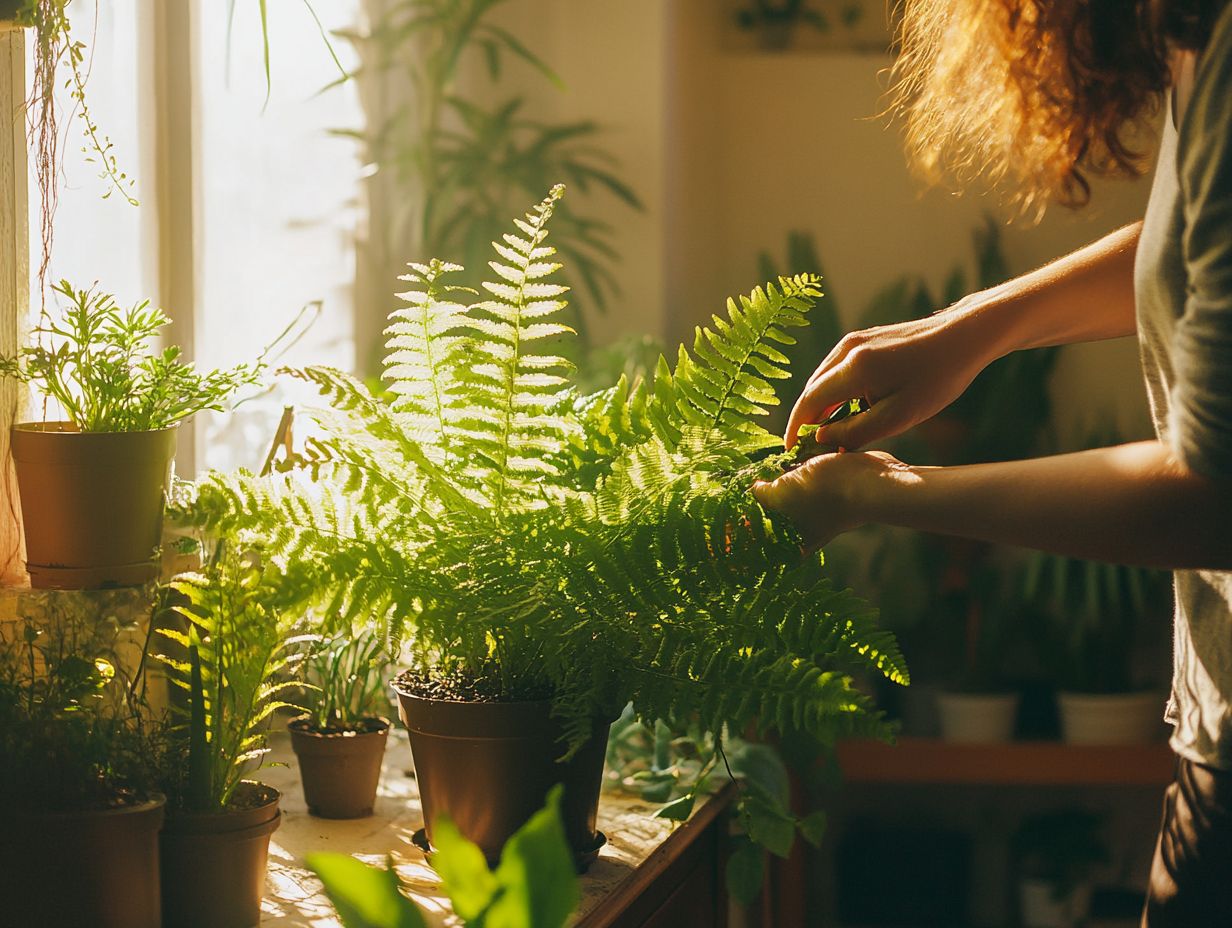
Some common issues with houseplants include overwatering, under-watering, insufficient light, and pest infestations.
How can I easily solve overwatering of my houseplants?
Let the soil dry out before watering again. You can also repot the plant in well-draining soil and adjust your watering schedule accordingly.
What can I do to address under-watering of my houseplants?
Thoroughly water the plant until water drains out of the bottom of the pot. You can also place the pot in a tray of water for a few hours to allow the soil to absorb moisture.
What is an easy solution for houseplants with insufficient light?
If your houseplant is not receiving enough light, move it to a brighter location or supplement with artificial grow lights. Rotate the plant regularly to ensure all sides receive adequate light.
How can I deal with pest infestations on my houseplants?
If you notice pests, try removing them manually, using natural pest repellents such as neem oil or a dish soap solution, or using commercial insecticides specifically for houseplants.
What preventive measures can I take to avoid common houseplant issues?
Prevent common houseplant issues by choosing the right plants for your space and lifestyle, properly watering and fertilizing, and regularly inspecting your plants for signs of pests or diseases.


